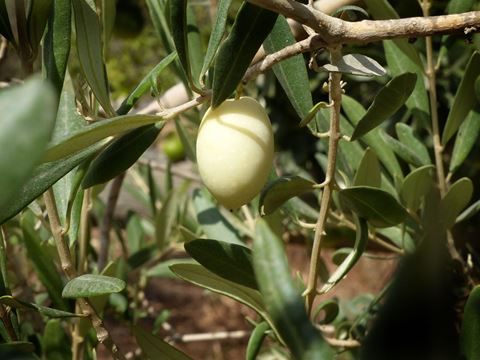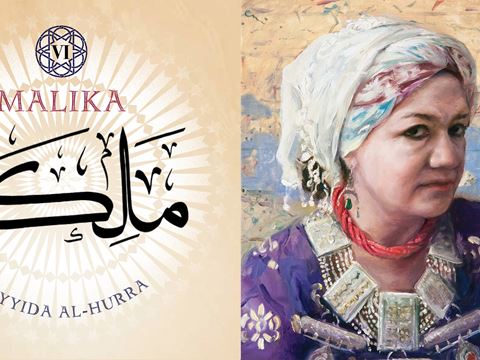Author
Tom Verde
Tom Verde (tomverde.pressfolios.com) is a senior contributor to AramcoWorld. Like the majority of those who responded to a 2015 global survey, his favorite color is blue.
Articles by this author

A Conversation With Salma Hage on Middle Eastern Deserts Cookbook
Food
Arts
Acclaimed cookbook author Salma Hage grew up in the mountains of the Kadisha Valley in Northern Lebanon. Like many cooks, she learned her craft at her mother’s knee, as well as those of other female relatives in her household, where she often took on the role of cook for her eleven siblings. Her most recent book, Middle Eastern Sweets, pays homage to the many sweet endings to traditional family meals plus the rich multicultural influences that have defined Lebanon and the region for centuries.
On the Origins of Gothic Architecture: A Conversation with Diana Darke
Arts
History
With its rose windows and soaring, pointed arches, Gothic architecture is a crowning achievement of medieval Western Christendom but not, writes Oxford-educated Arabist Diana Darke, an independently developed one.
How a Story of Bread Became a Sharing of Culture: A Conversation With Marina Abrams
Arts
In this colorful, educational children's book, Marina Abrams summons her childhood memories along the Kazakhstan-China border, all brought to life and imagination by Tajik illustrator Farrukh Negmatzade.
The New York of Anthony Jansen van Salee
History
His 19th- and 20th-century descendants became some of New York’s most glittering glitterati, but when this son of a pirate arrived in the fledgling colonial outpost of New Amsterdam in 1629 and became the first Muslim to own property in the future U.S., conflicts with Dutch authorities nearly undid his ambitions.
The Quest for Blue
Arts
History
Rare in nature and difficult to extract from minerals, blue eluded artisans for centuries until Egyptians invented the world’s first synthetic pigment. Formulas for blues from cobalt and indigo followed, and the results have delighted our eyes and evoked the sacred, the royal, the opulent and the mysterious ever since. And the quest is not over.
The Dialogues of Don Quixote
Arts
History
Amid the fearful turbulence of the 17th century, Spanish author Miguel de Cervantes invented a plot, characters and names that seemed innocently comical, but they cleverly cloaked his insistence that Spain recognize its historical diversity—and Don Quixote became the bestselling novel ever published.
Women Behind the Lens: The Middle East's First Female Photographers
Arts
History
Some took portraits of women or worked in the labs of family studios. Some worked across the region with employers or family members. A few struck out on their own. None received much notice—until recently. Three historians introduce leading women photographers of the early 20th century in the Middle East.
Cairo’s House of Knowledge
History
Science & Nature
Shortly after the founding of Cairo, Egypt, in 969 CE, its ruler started a research center whose legacies—particularly in optics and astronomy—helped shape the world we know today.
Egyptology’s Pioneering Giant
History
Circus strongman, amateur engineer, locator and excavator of tombs and temples, mover of massive masterpieces—to England—Giovanni Battista Belzoni left a legacy in Egyptology that was, in every conceivable way, large.
Arab Translators of Egypt’s Hieroglyphs
History
The translation of hieroglyphs in 1822 culminated more than 1,000 years of efforts by Romans, Arabs and Europeans. Insights from 10th-century Assyrian scholar Ibn Wahshiyya al-Nabati helped build the understanding that the Egyptian symbols worked in three distinct ways.
The White Olives of Malta
Food
In the Middle Ages, bajda olives—from the Arabic for “white”—were prized on this Mediterranean archipelago, but by the late 20th century they were nearly gone. It took a retired expert in gems and jewels to revive the olives knights once called “Maltese pearls.”
Malika VI: Sayyida Al-Hurra
History
When she governed the Moroccan coastal city of Tétouan, the Spanish accused her of organizing piracy, while at home she won respect from both Moroccans and post-1492 Andalusian émigrés. On land and sea, hers was a life charted by crisis.
Malika V: Nur Jahan
History
Wife and mother, businesswoman, fashion designer, real estate developer, garden plan-ner, philanthropist devoted to women, battle commander, tiger hunter: For the woman with a royal name meaning “Light of the World,” those were all part of Nur Jahan’s main job—running the Mughal empire.
Malika IV: Hürrem Sultan (Roxolana)
History
Though her Turkish name Hürrem meant “laughing one,” she proved better at breaking barriers —first by marrying the sultan, and later by directing more of the Ottoman Empire’s affairs than any woman before her.
Malika III: Shajarat Al-Durr
History
First woman to claim an Egyptian throne since Cleopatra, Shajarat Al-Durr won an Ayyubid sultan and then a crusader war; founded a Mamluk dynasty and ruled as sultana de facto far longer than de jure— until her storied, violent end.
Malika II: Radiyya bint Iltutmish
History
Deftly symbolizing an aggrieved citizen’s quest for justice, the rightful heir to the Sultanate of Delhi donned a red robe on the eve of battle. She won the people’s support for four years of prosperous rule, but her rivals proved insatiable.
Saving Sarajevo’s Literary Legacy
History
Braving sniper bullets, Mustafa Jahi and friends carried the historic volumes of the Gazi Husrev-beg Library from one hiding place to another throughout the three-year Siege of Sarajevo. Last year, the library found a new, permanent haven—close to where it was founded nearly 500 years ago.
Brill’s Bridge to Arabic
Arts
History
It started out as many successful businesses do: with a bit of vision, a prime location and some family connections. From its first Arabic text in 1732 to today, Brill’s books helped build the scholarship of what is today broadly called Middle East and Asian studies.